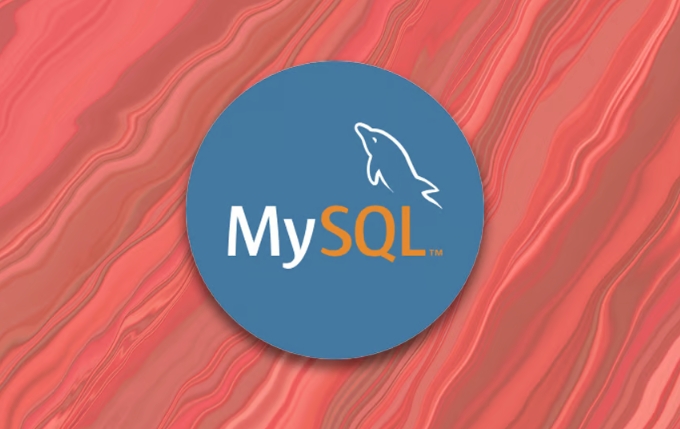There are three ways to export MySQL query results as CSV files: First, use the SELECT INTO OUTFILE command, the syntax is SELECT FROM your_table INTO OUTFILE '/path/to/file.csv' FIELDS TERMINATED BY ',' ENCLOSED BY '"' LINES TERMINATED BY '\n', pay attention to the path permissions, field wrapping and secure-file-priv settings; Second, combine the shell through MySQL client commands, such as mysql -u username -p -e "SELECT FROM your_database.your_table" | sed 's/\t/","/g;s/^/"/;s/$/"/' > output.csv, suitable for serverless permissions, but needs to deal with separators and field names; third, use graphical tools such as MySQL Workbench, click the "Export" button to select CSV format to save after executing the query, which is intuitive and suitable for daily use; in addition, you need to pay attention to special character processing, unified encoding, large file paging and export and permission issues. Mastering these methods and details can easily complete the export task.

Directly answer the title question: Using MySQL to export query results as CSV files is not difficult, it can be easily completed as long as you master a few key commands and precautions.

Export as CSV using SELECT INTO OUTFILE
This is the most common and most efficient method, suitable for situations where server access is available. The basic syntax is as follows:
SELECT * FROM your_table INTO OUTFILE '/path/to/your/file.csv' FIELDS TERMINATED BY ',' ENCLOSED BY '"' LINES TERMINATED BY '\n';
Some things to note:

- You must have write permissions to the target path, and this path is a path on the MySQL server, not a client.
- If the field contains commas or newline characters, it is best to wrap the field with
ENCLOSED BY '"'to avoid mismatch. - The path cannot be anywhere, and the secure-file-priv parameter is usually required to configure the secure-file-priv parameter to allow the export of the directory.
Export using MySQL client commands (suitable for remote operations)
If you do not have access to the server file system, you can use the mysql command line tool combined with shell commands to achieve it. For example:
mysql -u username -p -e "SELECT * FROM your_database.your_table" | sed 's/\t/","/g;s/^/"/;s/$/"/;s/\n//g' > output.csv
The advantage of this method is that it does not require INTO OUTFILE permissions, but be aware:

- The output content is separated by tab by default and needs to be converted into comma-separated by
sedor other tools. - The first line is the field name. If you don't want to take the field name, you can add the
-Nparameter to skip it. - This method is prone to problems when the data volume is large, and it is recommended to be used in small and medium tables.
Use graphical tools (such as MySQL Workbench, Navicat)
For those who are not very familiar with the command line, graphical tools will be more friendly. Take MySQL Workbench as an example:
- After executing the query, click the "Export" button in the lower right corner of the result table.
- Select the export format as CSV and set parameters such as separator, encoding, etc.
- Click Save to generate a CSV file.
The advantage of this method is that it is intuitive, not prone to errors, and is suitable for daily use, but it is not as flexible as the command line.
Notes and FAQs
- Special characters in the field content : such as double quotes, commas, and line breaks, which may cause CSV file parsing errors. It is recommended to wrap the fields in double quotes uniformly and escape the internal double quotes.
- Coding issues : Ensure that the exported CSV encoding is consistent with the encoding used by the import program. UTF-8 is generally recommended.
- Large file processing : If the data volume is particularly large, it is recommended to export paging or use special ETL tools.
- Permission Restrictions :
INTO OUTFILErequires FILE permission, and some managed database services may disable this feature.
Basically that's it. Although it seems that there are many steps, you can do it in a few steps after you are proficient. The key is to pay attention to details, especially the easy to ignore such places as format and path permissions.
The above is the detailed content of mysql export query result to csv. For more information, please follow other related articles on the PHP Chinese website!

Hot AI Tools

Undress AI Tool
Undress images for free

Undresser.AI Undress
AI-powered app for creating realistic nude photos

AI Clothes Remover
Online AI tool for removing clothes from photos.

Clothoff.io
AI clothes remover

Video Face Swap
Swap faces in any video effortlessly with our completely free AI face swap tool!

Hot Article

Hot Tools

Notepad++7.3.1
Easy-to-use and free code editor

SublimeText3 Chinese version
Chinese version, very easy to use

Zend Studio 13.0.1
Powerful PHP integrated development environment

Dreamweaver CS6
Visual web development tools

SublimeText3 Mac version
God-level code editing software (SublimeText3)

Hot Topics
 What is the default username and password for MySQL?
Jun 13, 2025 am 12:34 AM
What is the default username and password for MySQL?
Jun 13, 2025 am 12:34 AM
The default user name of MySQL is usually 'root', but the password varies according to the installation environment; in some Linux distributions, the root account may be authenticated by auth_socket plug-in and cannot log in with the password; when installing tools such as XAMPP or WAMP under Windows, root users usually have no password or use common passwords such as root, mysql, etc.; if you forget the password, you can reset it by stopping the MySQL service, starting in --skip-grant-tables mode, updating the mysql.user table to set a new password and restarting the service; note that the MySQL8.0 version requires additional authentication plug-ins.
 What is GTID (Global Transaction Identifier) and what are its advantages?
Jun 19, 2025 am 01:03 AM
What is GTID (Global Transaction Identifier) and what are its advantages?
Jun 19, 2025 am 01:03 AM
GTID (Global Transaction Identifier) ??solves the complexity of replication and failover in MySQL databases by assigning a unique identity to each transaction. 1. It simplifies replication management, automatically handles log files and locations, allowing slave servers to request transactions based on the last executed GTID. 2. Ensure consistency across servers, ensure that each transaction is applied only once on each server, and avoid data inconsistency. 3. Improve troubleshooting efficiency. GTID includes server UUID and serial number, which is convenient for tracking transaction flow and accurately locate problems. These three core advantages make MySQL replication more robust and easy to manage, significantly improving system reliability and data integrity.
 How to change or reset the MySQL root user password?
Jun 13, 2025 am 12:33 AM
How to change or reset the MySQL root user password?
Jun 13, 2025 am 12:33 AM
There are three ways to modify or reset MySQLroot user password: 1. Use the ALTERUSER command to modify existing passwords, and execute the corresponding statement after logging in; 2. If you forget your password, you need to stop the service and start it in --skip-grant-tables mode before modifying; 3. The mysqladmin command can be used to modify it directly by modifying it. Each method is suitable for different scenarios and the operation sequence must not be messed up. After the modification is completed, verification must be made and permission protection must be paid attention to.
 What is a typical process for MySQL master failover?
Jun 19, 2025 am 01:06 AM
What is a typical process for MySQL master failover?
Jun 19, 2025 am 01:06 AM
MySQL main library failover mainly includes four steps. 1. Fault detection: Regularly check the main library process, connection status and simple query to determine whether it is downtime, set up a retry mechanism to avoid misjudgment, and can use tools such as MHA, Orchestrator or Keepalived to assist in detection; 2. Select the new main library: select the most suitable slave library to replace it according to the data synchronization progress (Seconds_Behind_Master), binlog data integrity, network delay and load conditions, and perform data compensation or manual intervention if necessary; 3. Switch topology: Point other slave libraries to the new master library, execute RESETMASTER or enable GTID, update the VIP, DNS or proxy configuration to
 How to connect to a MySQL database using the command line?
Jun 19, 2025 am 01:05 AM
How to connect to a MySQL database using the command line?
Jun 19, 2025 am 01:05 AM
The steps to connect to the MySQL database are as follows: 1. Use the basic command format mysql-u username-p-h host address to connect, enter the username and password to log in; 2. If you need to directly enter the specified database, you can add the database name after the command, such as mysql-uroot-pmyproject; 3. If the port is not the default 3306, you need to add the -P parameter to specify the port number, such as mysql-uroot-p-h192.168.1.100-P3307; In addition, if you encounter a password error, you can re-enter it. If the connection fails, check the network, firewall or permission settings. If the client is missing, you can install mysql-client on Linux through the package manager. Master these commands
 How does InnoDB implement Repeatable Read isolation level?
Jun 14, 2025 am 12:33 AM
How does InnoDB implement Repeatable Read isolation level?
Jun 14, 2025 am 12:33 AM
InnoDB implements repeatable reads through MVCC and gap lock. MVCC realizes consistent reading through snapshots, and the transaction query results remain unchanged after multiple transactions; gap lock prevents other transactions from inserting data and avoids phantom reading. For example, transaction A first query gets a value of 100, transaction B is modified to 200 and submitted, A is still 100 in query again; and when performing scope query, gap lock prevents other transactions from inserting records. In addition, non-unique index scans may add gap locks by default, and primary key or unique index equivalent queries may not be added, and gap locks can be cancelled by reducing isolation levels or explicit lock control.
 How to alter a large table without locking it (Online DDL)?
Jun 14, 2025 am 12:36 AM
How to alter a large table without locking it (Online DDL)?
Jun 14, 2025 am 12:36 AM
Toalteralargeproductiontablewithoutlonglocks,useonlineDDLtechniques.1)IdentifyifyourALTERoperationisfast(e.g.,adding/droppingcolumns,modifyingNULL/NOTNULL)orslow(e.g.,changingdatatypes,reorderingcolumns,addingindexesonlargedata).2)Usedatabase-specifi
 What is the purpose of the InnoDB Buffer Pool?
Jun 12, 2025 am 10:28 AM
What is the purpose of the InnoDB Buffer Pool?
Jun 12, 2025 am 10:28 AM
The function of InnoDBBufferPool is to improve MySQL read and write performance. It reduces disk I/O operations by cacheing frequently accessed data and indexes into memory, thereby speeding up query speed and optimizing write operations; 1. The larger the BufferPool, the more data is cached, and the higher the hit rate, which directly affects database performance; 2. It not only caches data pages, but also caches index structures such as B-tree nodes to speed up searches; 3. Supports cache "dirty pages", delays writing to disk, reduces I/O and improves write performance; 4. It is recommended to set it to 50%~80% of physical memory during configuration to avoid triggering swap; 5. It can be dynamically resized through innodb_buffer_pool_size, without restarting the instance.






